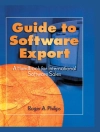Enterprises, as well as individuals, are racing to reap the benefits of AI. However, in most cases, they are doing so without understanding the technology or its implications and risks, which can be significant. Artificial Intelligence: A Guide for Everyone is a step in addressing that gap by providing information that readers can easily understand at every level.
This book aims to provide useful information to those planning, developing, or using AI, which has the potential to transform industries and shape the future. Whether you are stepping into the world of AI for the first time or are a seasoned professional seeking deeper insights, this comprehensive guide ensures that both beginners and experienced individuals find value within its pages.
Artificial Intelligence: A Guide for Everyone encompasses theoretical as well as practical aspects of AI across various industries and applications. It demystifies AI by explaining, in a language that non-techies can follow, its history, different types, differentiating technologies, and various aspects of implementation. It explains the connection between AI theory and real-world application across diverse industries and how it fuels innovation.
Whether you are an executive, student, professional, seasoned businessperson, or simply curious about the future of technology, Artificial Intelligence: A Guide for Everyone equips you with the knowledge to navigate this transformative field with confidence.
Mục lục
Preface.- Chapter. 1. Introduction.- Chapter. 2. Benefits and Disadvantages.- Chapter. 3. AI-Human Relationship.- Chapter. 4. Requirements.- Chapter. 5. Technologies, Techniques, and Components.- Chapter. 6. Building an AI System.- Chapter. 7. Pre-built AI.- Chapter. 8. Measuring AI Performance.- Chapter. 9. Comparing Measurement Methods.- Chapter. 10. Simulating Intelligence.- Chapter. 11. Traditional Goals of AI Research.- Chapter. 12. Additional Goals of AI Research.- Chapter. 13. Machine Learning.- Chapter. 14. Machine Learning Development Process.- Chapter. 15. AI Development Process.- Chapter. 16. AI Sub-fields.- Chapter. 17. AI Categories.- Chapter. 18. Categories based on Functionality.- Appendix.
Giới thiệu về tác giả
Arshad Khan is an analytics professional and adjunct professor. He has authored 20 books in software, engineering, and business. Mr. Khan has taught at 9 universities including the University of California (Berkeley, Santa Cruz/Silicon Valley, and San Diego Extensions), Golden Gate University, Santa Clara University, and San Francisco Bay University. Mr. Khan has a graduate degree in chemical engineering and an MBA.












